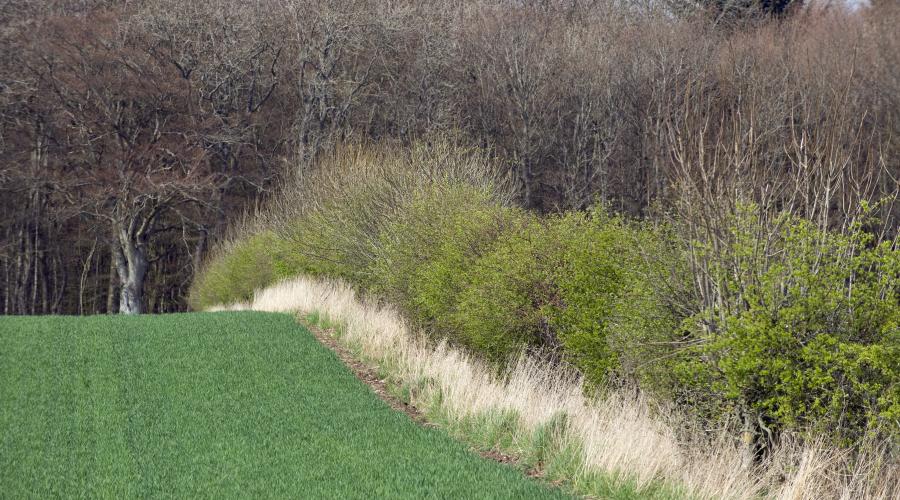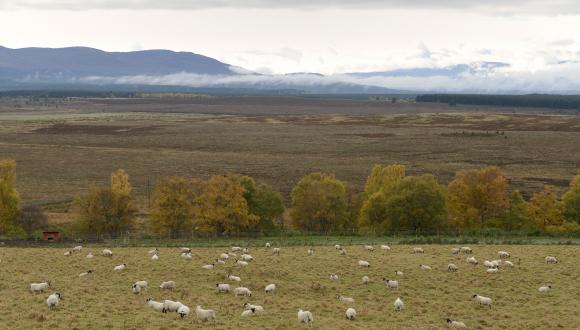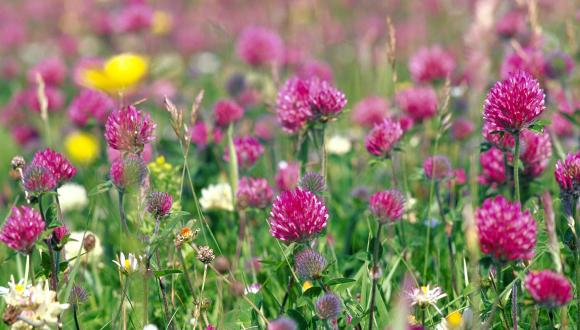
Hedgerows and field margins
Ongoing hedge management will preserve these important habitats, which provide food and shelter for birds, butterflies and mammals, and shade for livestock.
Hedges are an integral part of our landscape and our culture. These original field boundaries provide a vital habitat and refuge for a wealth of farmland wildlife. They were also traditionally used as a source of food, fuel and timber.
In the 20th century, Scotland lost about half of its hedgerows. Thanks to agri-environment schemes, a few thousands kilometers of hedgerows have been created in the last two decades. The estimated length of hedgerows in Scotland is over 22,000 km.
Ongoing hedge management is required to preserve these important habitats.
Hedges provide food and shelter for:
- birds – e.g. song thrush, yellowhammer, barn owl
- butterflies – e.g. peacock, meadow brown
- mammals – e.g. bats, hedgehog, vole
Hedgerows may also act as habitat corridors, helping animals to travel through open farmland while staying under cover. Find out more about habitat networks.
Hedgerow trees add further variety to the hedge, and provide:
- food, nesting sites and song posts for wildlife
- shelter and shade for livestock
- wood and fruit for people
Threats to our hedgerows
Hedges should only be trimmed every 2 to 3 years, in rotation around the farm. Aim to cut no more than a third of the hedges at any one time to maintain a good source of food and shelter. Ongoing management may also involve laying and coppicing sections of hedge.
Hedges no longer vital as stock-proof field boundaries are often left unmanaged or are cut short every year. This can result in ‘bonsai’ hedges, which provide few flowers and berries for wildlife and little shelter for stock.
Field margins
Conservation headlands, beetlebanks and grass margins around arable fields are all kept free of pesticides so that invertebrates can thrive. Insects living in these strips may include crop pollinators and predators of crop pests, and are also a food source for birds and small mammals.
Unsprayed field margins act as a buffer between the crop, with its chemical applications, and the adjacent unsprayed habitat. But field margins are under threat from agricultural intensification, as they take an area of land out of maximum production.
Arable farms must now manage 5% of their arable area as an Ecological Focus Area (EFA) to meet greening requirements. This requires farms to carry out agricultural practices to improve biodiversity, which benefits the environment.
Options for managing the EFA include:
- fallow land
- buffer strips
- field margins
- catch/green cover
- nitrogen-fixing crops
Find out more about Ecological Focus Areas on the Rural Payments and Services website.







